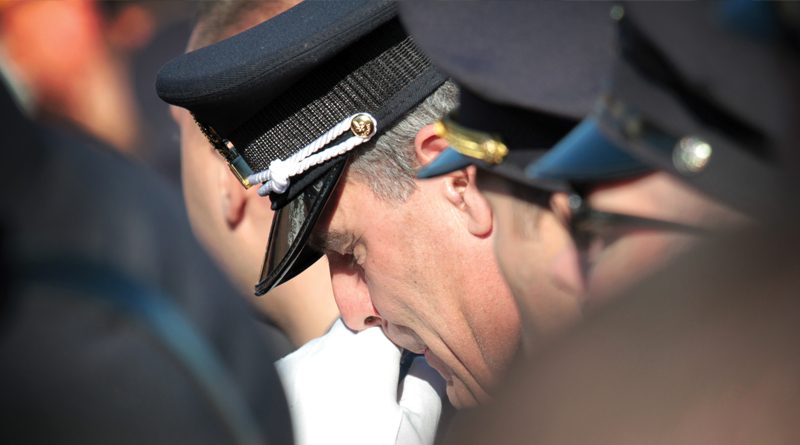Wounded Warriors
POLICE OFFICERS TACKLE POST-TRAUMATIC STRESS DISORDER
A constable on patrol in the early hours of the morning pursues a getaway car with armed robbery suspects.
The car crashes, and one of the suspects emerges and makes a motion that the constable fears signifies that he is reaching for a gun. The constable shoots, the suspect dies at the scene, and when the constable examines the dead body, there is no weapon to be found.
An officer chases a man suspected of robbing a jewelry store, cornering him in a schoolyard. There is a classroom full of children behind the suspect. The officer doesn’t know if the suspect is armed, but rather than shoot him, he talks him into surrendering. He is rewarded by his department, but fellow officers shun him, considering him of dubious reliability as a partner for dangerous situations.
A transit officer, a woman new on the job, tries to coax a mentally ill man off the narrow pathway alongside a subway tunnel, so that the subway car can safely proceed. The man attacks her, leaving her with massive physical injuries.
A young officer is nearly shot while pursuing thieves who have stolen goods worth less than $40. He survives, physically unharmed. A police staff-sergeant hears the anguished cries of a fellow officer, shot by two robbers and held hostage. At first the staff-sergeant holds back as commanded by his senior officer, but then, disobeying orders, he enters the scene – but not in time to save the life of his bleeding-to-death comrade.
A police officer believes she knows the identity of a wanted serial killer, but is unable to prove the case and make an arrest until more women disappear, more are murdered.
This article is featured in The Police Advocates Journal

